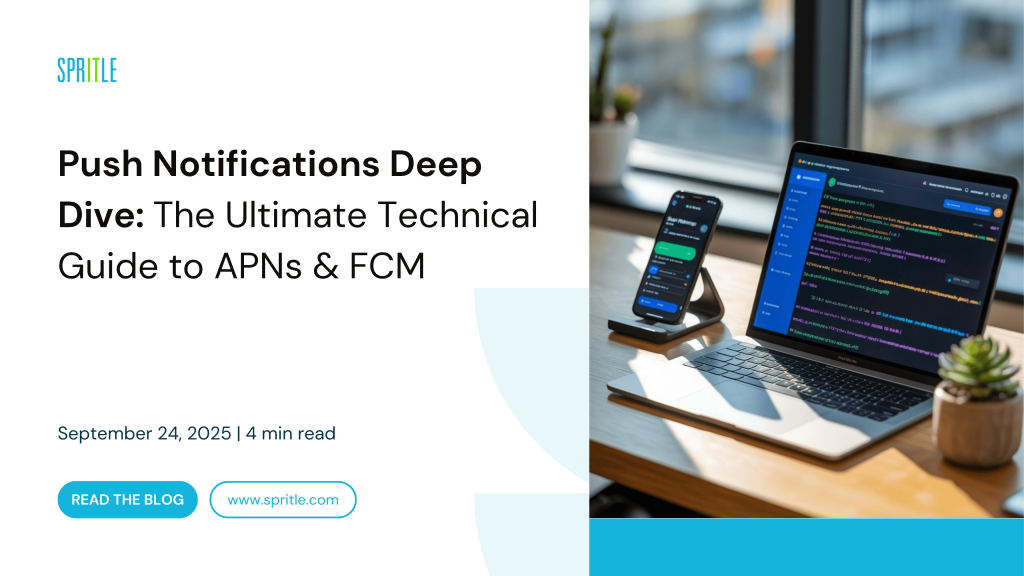


🔔 **推送通知的核心流程**:推送通知的传递涉及五个关键步骤:服务器发起请求,将包含认证信息和设备标识的通知载荷发送至推送服务;推送服务进行认证并排队等待投递;通过持久、安全的连接将通知路由至目标设备;设备接收通知数据;最后由操作系统或应用处理并展示给用户。这个端到端的流程是确保信息实时送达的基础。
🍎 **APNs 的技术细节与优化**:APNs 支持基于 Token 的认证(推荐)和传统的证书认证。它通过 HTTP/2 API 提供高效的通信,并强调保持连接的持久性以避免被视为拒绝服务攻击。APNs 能够处理消息合并(apns-collapse-id)和优先级(高/低)来优化投递,同时对设备token的有效性进行严格校验,并提供详细的错误响应码,帮助开发者诊断问题。
🤖 **FCM 在 Android 中的优势及工作原理**:FCM 作为 Google 的官方推送服务,凭借与 Android 生态的深度集成,实现了轻量级和高效率。它通过单一的持久连接服务于设备上的所有应用,并能利用 APNs 实现跨平台支持。FCM 的 Fan-Out 架构、全球数据中心负载均衡、带重试逻辑的队列式投递以及对设备状态(在线、Doze、离线)的智能适应,确保了海量通知的高效、可靠且省电的送达。
🚦 **技术限制与可靠投递策略**:APNs 和 FCM 都对通知载荷的大小有严格限制(APNs 为 4KB,FCM 为 4KB,主题消息为 2KB)。同时,它们也存在速率限制。为了实现可靠的推送通知,开发者应尽量精简载荷,仅在必要时使用高优先级,及时清理无效的设备 token,并在遇到错误时实施带有指数退避的重试逻辑,同时持续监控推送成功率。

Push notifications are the lifeline of modern mobile apps, delivering real-time updates, alerts, and personalized experiences — even when the app isn’t running. But how do these tiny messages travel across the globe from your server to a user’s screen within milliseconds?If you’re a developer eager to master the internal mechanics of Apple Push Notification Service (APNs) and Firebase Cloud Messaging (FCM), this guide is for you. We’ll peel back the layers and show you exactly how push notifications work under the hood, from authentication to persistent connections.

Push notifications aren’t just messages — they’re user engagement engines. Whether it’s a breaking news alert, a chat message, or a critical app update, push notifications keep users connected without draining device resources.
To truly optimize push delivery, you need to understand the entire pipeline. Let’s break it down.
How a Notification Travels: From Your Server to the User’s ScreenHigh-level push notification delivery workflow diagram
The 5 Critical Steps of Push Notification DeliveryApple Push Notification Service (APNs) internal architecture and delivery pipeline
Authentication MechanismsAPNs supports two authentication methods:
Always use token-based authentication for better scalability and security.
HTTP/2 API IntegrationAPNs expose an HTTP/2 API endpoint for optimal performance. Your server opens a connection and sends HTTP/2 POST requests with the device token in the URL path and JSON payload in the body. Critical best practice: Keep connections open for multiple requests, as opening/closing connections for each message can be treated as a denial-of-service attempt.
Message Validation and Response HandlingUpon receiving requests, APNs immediately validates:
Common APNs error responses include:
Each Apple device maintains a persistent encrypted connection to APNs when network connectivity is available. This connection remains idle most of the time, using minimal power, and activates only when APNs delivers notifications. This design eliminates the need for devices to poll for messages.
Message Coalescing and Priority HandlingAPNs supports message coalescing using apns-collapse-id. Multiple notifications with the same collapse ID result in only the most recent message being displayed. APNs may drop expired messages or lower-priority notifications if devices remain unreachable.
Priority levels:
Firebase Cloud Messaging (FCM) internal architecture and delivery pipeline
Why FCM Rules Android Push DeliveryFirebase Cloud Messaging (FCM) is Google’s official push notification service for Android, and it dominates for several reasons:
Bottom Line: FCM’s tight integration, efficiency, and scalability make it the default choice for Android push notifications.
How FCM Handles Millions of Notifications Per MinuteDelivering millions of notifications in real-time sounds impossible, but Google’s cloud infrastructure makes it happen with these mechanisms:
Result: FCM can process millions of messages per minute with minimal latency and maximum reliability.
Managing Device States: Online, Doze, and Offline ScenariosAndroid devices aren’t always active — they can be online, in Doze mode, or completely offline. FCM intelligently adapts delivery based on device state:
➔ Device Online & Active
➔ Device in Doze Mode (Battery Optimization)
➔ Device Offline
Takeaway: FCM’s state-aware delivery system ensures reliable messaging without compromising battery performance.
Technical Constraints & Performance➔ APNs — No hard limit, but throttles abuse
➔ FCM — ~600,000 messages/min per project
Best Practices for Reliable Delivery Keep payloads lean — under 4 KB
Use high priority only when necessary
Clean up invalid tokens after errors
Implement retry logic with exponential backoff
Monitor success rates for delivery issues
Push notifications are not magic — they’re engineering masterpieces. Both APNs and FCM use persistent connections, smart queuing, and optimized delivery algorithms to balance real-time speed and battery efficiency.
By following best practices, optimizing payloads, and handling errors gracefully, you’ll build a notification system that’s fast, reliable, and user-friendly.
The post Push Notifications Deep Dive: The Ultimate Technical Guide to APNs & FCM appeared first on Spritle software.
AI辅助创作,多种专业模板,深度分析,高质量内容生成。从观点提取到深度思考,FishAI为您提供全方位的创作支持。新版本引入自定义参数,让您的创作更加个性化和精准。

鱼阅,AI 时代的下一个智能信息助手,助你摆脱信息焦虑